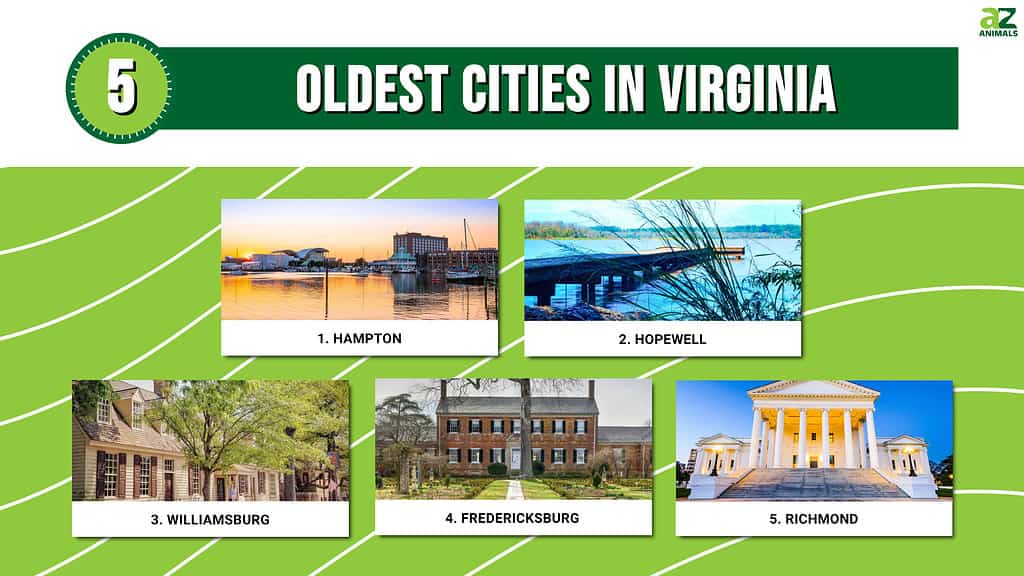
In many ways, Virginia is the birthplace of the United States. It is the site of Jamestown, the first permanent English settlement in the New World. Additionally, the state played a leading role in the American Revolution. In fact, the war was won at Yorktown. It was also the location of many of the Civil War’s most significant battles. This infamous war ended at Appomattox Courthouse. In addition to its history, Virginia has mountains, rolling farmland, beaches, and modern urban areas to explore. Let’s check out five of the oldest cities in Virginia!

The three main regions of Virginia are the Appalachians, the Piedmont region, and the flat Tidewater.
©EmLion/Shutterstock.com
1. Hampton, 1610 (population 137,148)
Hampton is located on a peninsula in the Chesapeake Bay in the southeastern corner of the state. It neighbors Newport News and is across a strait of the bay from the large Norfolk-Chesapeake-Virginia Beach metropolitan area. It is the oldest continuously populated English city in the United States. Sadly, it was also where Dutch merchants first brought enslaved Africans to the continent. During the Civil War, the first ironclad warships, the Monitor and the Merrimack, battled near here. These battles marked the beginning of the end of the wooden ship era.
Tourists often like to visit the Old Point Comfort Lighthouse, a navigational beacon marking the entrance to historic Hampton Roads. Children and adults enjoy the Hampton Carousel, with hand-carved horses built by European artisans. It’s on Hampton’s downtown waterfront, within walking distance of shopping and dining. Air Power Park has indoor and outdoor exhibits of spacecraft, missiles, and fighter aircraft. Hampton Coliseum can seat almost 10,000 people for concerts, conventions, and trade shows. Nature lovers should visit Sandy Bottom Nature Park, a 456-acre wildlife reserve. It has 12 miles of nature trails winding through wetlands and woodlands.
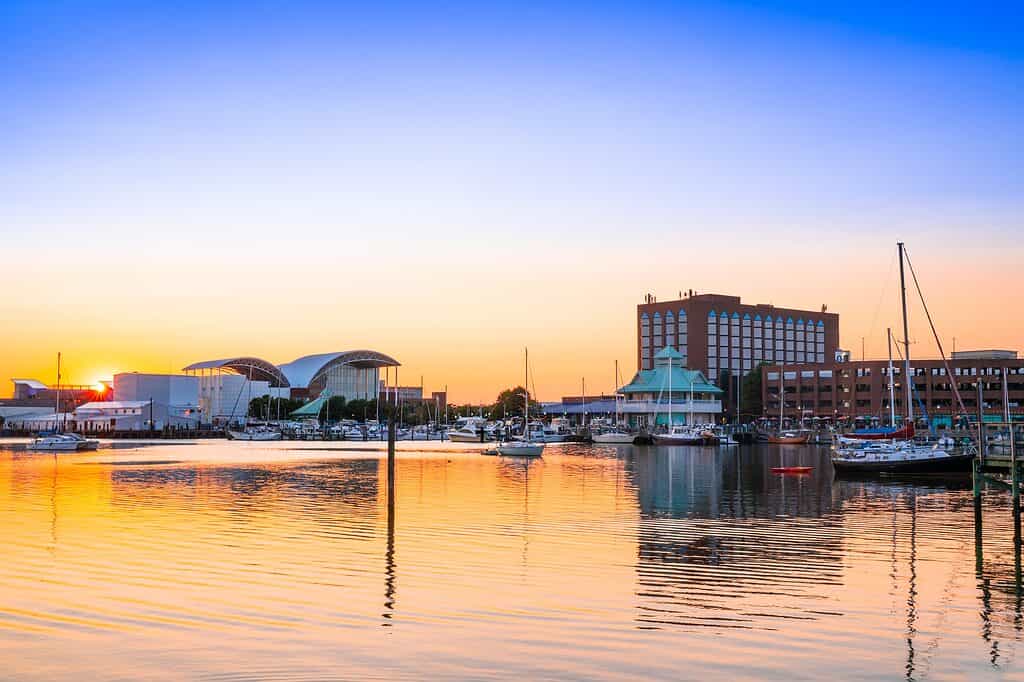
The downtown waterfront in Hampton, Virginia is lovely.
©littlenySTOCK/Shutterstock.com
2. Hopewell, 1613 (population 23,033)
Hopewell is an inland port at the juncture of the James and Appomattox Rivers, 23 miles from the state capital, Richmond. At the beginning of the 20th century, the DuPont company made major investments in manufacturing there. They produced dynamite, among other war materials. After DuPont left, Firestone set up manufacturing operations in Hopewell and provided employment for local residents for decades. By the second half of the 20th century, the downtown area declined significantly. However, in recent years the city has been revitalizing it.
Hopewell has a large number of kit homes, including Sears Catalog Homes, that are of interest to people who like history and architecture. If you want something fancier, there’s Weston Manor, a 1789 mansion in Georgian style with period antiques and reproductions. Descendants of the Native American princess, Pocahontas, built the home. Speaking of which, Pocahontas Island is a 13-minute drive away. It is one of the oldest African American communities in the United States. Slaves settled here in 1732 to work in tobacco warehouses. You can learn all about it at the island’s Black History Museum.
Hopewell Riverwalk is a wooden boardwalk along the Appomattox River. It features a sandy beach, a fishing pier, a covered pavilion, and a playground for the little ones. A dubious attraction is the “Big H” – a 65-foot-tall stainless-steel letter on a highway median. The H welcomes visitors, though locals think it’s an eyesore and have signed a petition to get rid of it.
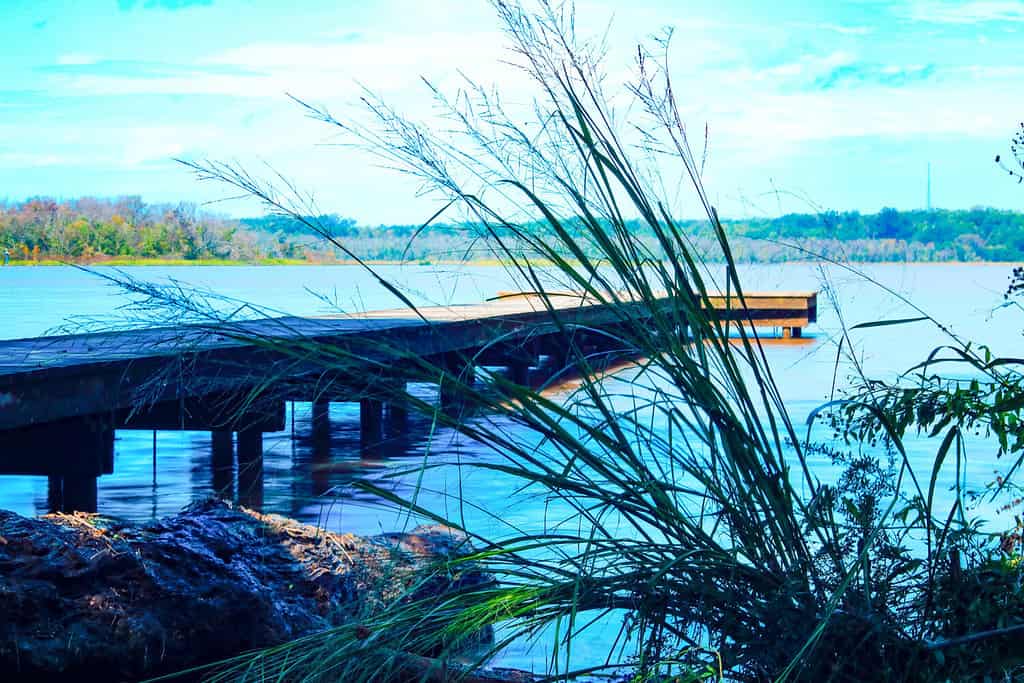
3. Williamsburg, 1632 (population 15,425)
Williamsburg is located on a peninsula between the broad York and James Rivers that empty into the Chesapeake Bay. It replaced Jamestown as the main settlement in the Virginia Colony because it had better conditions for crops and fewer mosquitos. Tobacco was the traditional cash crop of the area and in much of the rest of Virginia. Williamsburg was named in honor of King William III of England and became the capital of the colony. It is also the site of the College of William and Mary, the second-oldest college in the U.S. after Harvard.
If you plan a vacation to Virginia, the one place you must go is Colonial Williamsburg. You’ll see not just a historic house or two, but an entire community of meticulously reconstructed homes, well-manicured lawns, livestock, working blacksmiths, candlemakers, and bakers. Historical reenactors dressed in period costumes tell stories and interact with guests. Go at the right time and you may also see a battle reenactment. However, remember that Williamsburg is the top tourist destination in the state, and crowds can be large. It’s best to check out schedules of events and purchase tickets online in advance. Additionally, allow plenty of time to see everything at a leisurely walking pace.
Historic Jamestown and Yorktown are nearby, as well as Busch Gardens/The Old Country, a European-themed amusement park. Finally, shoppers will have a glorious time at the Williamsburg Pottery. Three million customers a year shop in this gigantic 30-building, 200-acre marketplace. They sell housewares, home decor, gardening, and landscaping items, and of course, pottery made on-site. A visit to the Williamsburg area can easily keep you entertained for a week. Just make sure you leave room in your suitcase for all the good bargains and souvenirs.

The restoration of Colonial Williamsburg in the 1920s created a demand for this style of architecture.
©Christopher Sciacca/Shutterstock.com
4. Fredericksburg, 1728 (population 27,982)
Fredericksburg is in the northern part of the state, 53 miles south of Washington, D.C. It was named for Frederick the Prince of Wales, and the city’s streets were named after other members of the royal family. It was here that Thomas Jefferson wrote the Virginia Statue for Religious Freedom. This was an important document that influenced the later writing of the United States Constitution. The proximity of the city to the nation’s capital has made it a prime headquarters for political lobbyists and government contractors. Several military installations are nearby: Quantico (U.S. Marine Corps), Fort Belvoir (U.S. Army), Dahlgren Surface Weapons Base (U.S. Navy), and A.P. Hill (Virginia National Guard).
Military buffs should see the Fredericksburg and Spotsylvania National Military Park, with four major Civil War battlefields, including Chancellorsville, where Stonewall Jackson died. George Washington’s Ferry Farm has guided and self-guided tours of the farm where George Washington spent some of his childhood years. Hugh Mercer Apothecary Shop is a museum commemorating a colonial doctor who treated Mary Washington. You’ll learn about the medical and pharmaceutical treatments of the period, as well as military and political events. Chatham Manor is worth seeing, both for its views of the Rappahannock River and the city of Fredericksburg, and because several notable historical figures stayed there, including George Washington, Abraham Lincoln, Clara Barton, and Walt Whitman. Finally, the James Monroe Museum and Memorial Library is the site of James Monroe’s law office and Presidential Library.
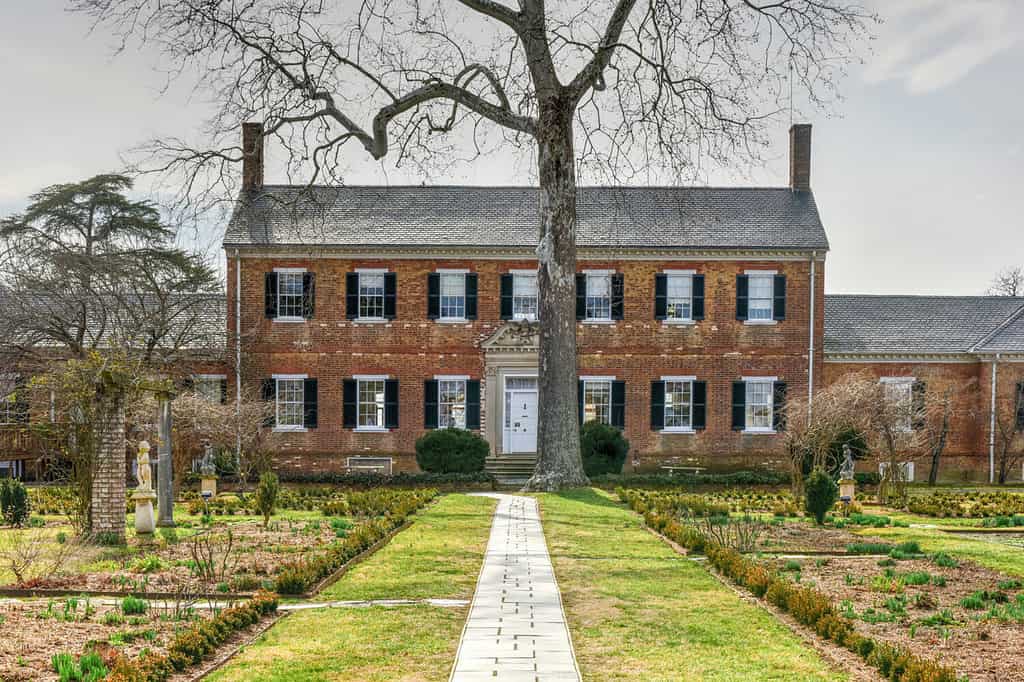
Chatham Manor is a Georgian-style home completed in 1771 on the Rappahannock River.
©Felix Lipov/Shutterstock.com
5. Richmond, 1733 (population 226,610)
The state capital, Richmond, is at the fall line of the James River – the point at which it is no longer navigable from the Chesapeake Bay. The city prospered at this location. It was the point where goods shipped down the river from inland had to be unloaded and reloaded onto larger barges and ships for export. It got its name because its location was similar to that of Richmond-on-the-Thames in England. The capital moved there from Williamsburg in 1779. The economy of the city thrived on the tobacco trade, manufacturing, government, legal, and financial services. Today, it is also the home of several Fortune 500 companies and one of 12 Federal Reserve Banks in the United States.
The city is full of historic buildings, including the state capitol building, designed by Thomas Jefferson, and St. John’s Church where Patrick Henry gave his electrifying “Give me liberty or give me death!” speech in 1775. The Edgar Allan Poe Museum is a great place for literary buffs to learn about the life and works of one of the world’s original horror writers. The Richmond Symphony and the Science Museum of Virginia are more contemporary attractions for people of all ages.
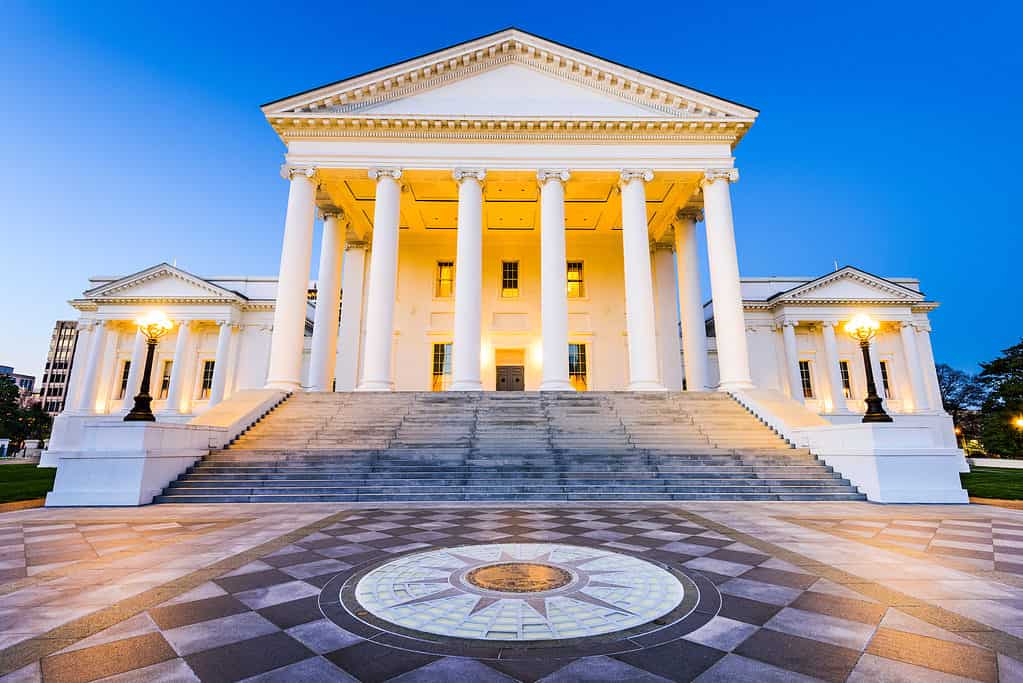
The city is full of historic buildings, including the state capitol building, designed by Thomas Jefferson.
©Sean Pavone/Shutterstock.com
Overlooked Regions
Something you might have noticed if you’re following along on a map is that all the cities listed in this article are in the coastal or northern parts of the state, an area called the Tidewater region. Because of the large urban areas, naval bases, and proximity to the D.C. urban area, this region is where most of the state’s population is concentrated. A large percentage of the people who live there have moved from out of state for work.
If you really want to get more of a feel for the whole state, including the more traditional rural Virginia lifestyle and culture, you may want to plan on driving through the Appalachian region in the western border areas, and through the central Piedmont region with its rolling foothills, farms, lakes, rivers, and woodlands. The Blue Ridge Mountains and Shenandoah National Park are well worth a visit, especially when the foliage changes in the fall. Small hospitable cities you could visit in the western and central part of the state include places like Roanoke, Danville, and Charlottesville. Danville, by the way, was the last capital of the Confederacy during the Civil War. Charlottesville is the home of the University of Virginia and Monticello, the remarkable home of the ever-inventive Thomas Jefferson. If you have a nickel coin in your pocket, you’ll see Monticello on the back side of it.
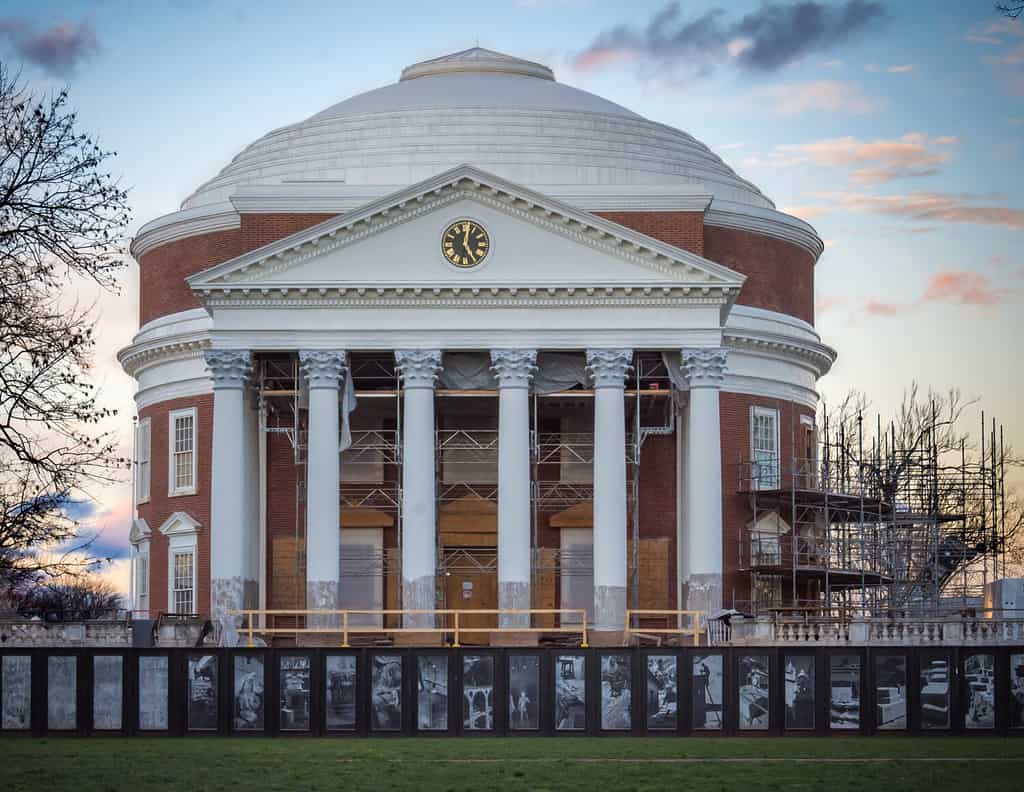
The iconic Rotunda was designed by Thomas Jefferson and modeled after the Pantheon in Rome.
©ss9ug/Shutterstock.com
“Virginia is for Lovers”
The unofficial motto for the state promoted by tourism boards is “Virginia is for Lovers,” and there is certainly a lot to love about the state. It has a diverse natural environment, with mountains, hills, farms, coastal cities, and fishing villages. It’s a great place to learn about the whole span of U.S. history – both its triumphs and tragedies. Virginia today continues to attract the nation’s best and brightest to help lead the country into the future.
Summary of Discover 5 of the Oldest Cities in Virginia
| Rank | City | Year Settled |
|---|---|---|
| 1 | Hampton | 1610 |
| 2 | Hopewell | 1613 |
| 3 | Williamsburg | 1632 |
| 4 | Fredericksburg | 1728 |
| 5 | Richmond | 1733 |
The photo featured at the top of this post is © Sean Pavone/Shutterstock.com
Thank you for reading! Have some feedback for us? Contact the AZ Animals editorial team.







